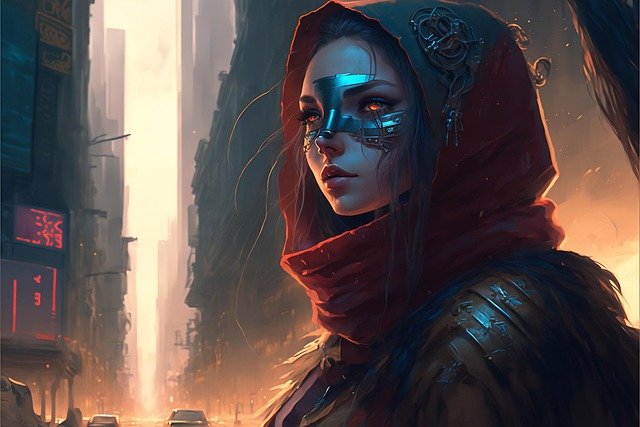Digital art is evolving beyond screens and pixels. Today, artists are blending technology with sustainability and nature-inspired themes to create work that is visually stunning, environmentally conscious, and emotionally compelling. By combining creativity, eco-friendly methods, and inspiration from the natural world, you can produce digital art that resonates deeply with audiences and honours the planet.
Whether you’re a professional illustrator, a digital designer, or a passionate hobbyist, learning how to integrate nature and sustainability into your digital art can help your creations stand out and make a positive impact.
Understanding Sustainable and Nature-Inspired Digital Art
Sustainable digital art focuses on minimising environmental impact while creating meaningful, captivating artwork. This can include using energy-efficient tools, limiting unnecessary resource use, and promoting eco-friendly practices in the creative workflow.
Nature-inspired digital art draws influence from flora, fauna, landscapes, and natural phenomena, translating them into visually stunning compositions. Combining sustainability with nature-inspired elements ensures that your art is not only beautiful but also aligned with ethical and environmental values.
Key Techniques to Explore
Here are practical techniques to make your digital art sustainable and nature-inspired:
- Eco-Friendly Digital Tools: Use energy-efficient software and devices to minimise your carbon footprint while creating.
- Nature-Based Inspiration: Observe natural patterns, textures, and colours. Incorporate them into your work for authenticity and emotional depth.
- Minimalist Designs: Focus on simplicity and elegance, reducing unnecessary layers or effects that consume excess computing power.
- Digital Brushes and Textures: Choose natural textures and organic patterns that reflect environmental themes, such as leaf veins, water ripples, or wood grains.
- Sustainable Project Planning: Organise your workflow efficiently to reduce repetitive renders, storage space, and power consumption.
By following these techniques, your digital art will not only look amazing but also contribute to a sustainable creative practice.
Practical Tips for Artists
Here are additional tips to elevate your nature-inspired, sustainable digital art:
- Research and Reference Nature: Study real-world ecosystems, plants, and animals to create accurate yet imaginative visuals.
- Experiment with Colour Palettes: Use earthy tones, organic gradients, and natural lighting to evoke realism and harmony.
- Integrate Interactive Elements: If applicable, add subtle interactive features or animations to make the digital experience engaging and immersive.
- Share Your Eco-Friendly Practices: Educate your audience about sustainability in digital art; this adds value and encourages others.
- Iterate with Purpose: Focus on quality over quantity — thoughtful, polished work reduces resource waste and enhances impact.
These tips help you create digital art that is visually compelling, environmentally conscious, and emotionally engaging.
Applications in Digital Art
Sustainable and nature-inspired digital art can be applied across multiple creative fields:
- Illustration and Concept Art: Bring eco-themed worlds and fantastical natural environments to life.
- Animation and Motion Graphics: Highlight environmental narratives or wildlife through storytelling.
- Virtual and Augmented Reality Experiences: Immerse audiences in realistic or imaginative nature-inspired spaces.
- Commercial Design: Brands focusing on sustainability can leverage nature-inspired visuals for campaigns and promotions.
This approach not only enhances your art but also connects audiences to the environment, inspiring awareness and appreciation.
Challenges and How to Overcome Them
Even with digital tools, creating sustainable, nature-inspired digital art comes with challenges:
- High Energy Consumption: Rendering large, detailed projects can be resource-heavy. Solution: Optimise workflow, use efficient software, and limit redundant renders.
- Finding Inspiration: Sometimes, natural patterns are intricate to translate digitally. Solution: Use reference images, field sketches, or nature photography.
- Balancing Creativity and Sustainability: Ensuring eco-friendly practices don’t compromise creativity. Solution: Prioritise energy-efficient tools and plan projects strategically.
Overcoming these challenges ensures your work remains innovative, impactful, and environmentally responsible.
The Future of Sustainable Digital Art
The future of digital art is increasingly tied to sustainability and nature-inspired creativity. As tools become more efficient and audiences demand ethical practices, artists who embrace eco-conscious digital workflows and nature-centric themes will lead the next generation of impactful visual storytelling. Combining innovation, emotion, and environmental mindfulness allows creators to craft works that are both aesthetically remarkable and ethically responsible.
FAQs
1. What is sustainable digital art?
Sustainable digital art minimises environmental impact through efficient tools, mindful workflows, and energy-conscious practices while creating visually compelling work.
2. How do I make my digital art nature-inspired?
Study natural textures, colours, and patterns, then incorporate them into your compositions, using realistic or stylised techniques.
3. Which tools are best for eco-friendly digital art?
Energy-efficient devices and software like Photoshop, Procreate, Krita, and tablet apps help reduce energy consumption.
4. Can beginners create sustainable, nature-inspired digital art?
Yes. Focus on simple, organic designs, learn efficient workflows, and gradually explore more complex compositions.
5. How can this art style be used professionally?
It applies in illustration, animation, VR/AR experiences, concept design, and eco-conscious branding or campaigns.
